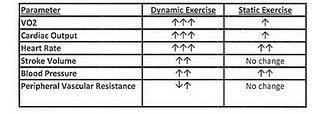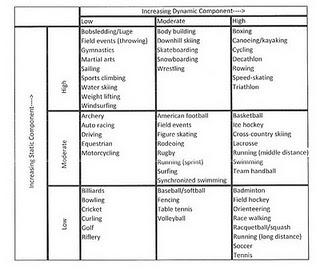
I appreciate the many iquiries I've received from readers about their particular situations with heart disease. I'm always happy to lend an ear. One of the more common questions has been something like:
"I recently learned I had 'x' and my doctor says I should stop 'y'. What do you think?"
For the purposes of our discussion here, 'x' could be any heart or vascular condition and 'y' could be any particular sport that interested the reader
I can always provide some information that helps people understand their situation better, but I encourage folks to work through the issue of continued participation with their own primary care physician or cardiologist. It's just so important to have a good relationship with these physicians in order to make the best (and safest) decisions. And it's virtually impossible for me, at the other end of an email, to appreciate all of the many factors that will be obvious to an athlete's own caregivers.
That said, I thought I'd devote the next couple blog posts to a discussion of the general issue of continued participation for athletes who are found to have various heart conditions. And I'm going to rely on a report issued by the American College of Cardiology Foundation after a consensus conference of experts met in November, 2004 to review all of the available evidence on this issue. This is the most thoughtful, authoritative report on this topic. The report is entitled, "36th Bethesda Conference: Eligibility Recommendations for Competitive Athletes with Cardiovascular Abnormalities." The report is available online for those with interest, but the report is targeted toward physician caregivers and doesn't seem to be particularly accessible to non-medical folks.
There are a handful of true experts on this topic around the United States, but most physicians who treat athletes will be relying on this report when they make recommendations to their athlete patients.
What are the cardiovascular demands of your sport?
Today, we'll talk about the cardiovascular demands of various sports. This is really the starting point for discussions with individual athlete patients....because recommendations about continued participation depend not only on the particular heart condition involved, but also on the particular sport involved. Any recommendation will depend upon the expected risk that accompanies continued participation; and that risk stems from the cardiovascular demands of the particular sport.
We should classify sports in terms of their "dynamic" and "static" components. By dynamic, we refer to exercise that involves changes in muscle length and joint movements that are accompanied by relatively small intramuscular force. By static, we refer to exercise that involves a large intramuscular force that results in no (or relatively small) change in muscle length. As examples, long distance running has a large dynamic component and a small static component. Weight lifting has a large static component and a small dynamic component.
Let's consider, for a moment, the opposite ends of the spectrum....a purely dynamic sport and a purely static sport. The cardiovascular effects of the sports are somewhat different and are summarized in this table:

Over time, participation in either dynamic or static sports results in increased cardiac mass. There is enlargement of the heart's chambers as well as thickening of the heart's walls.
A Useful Classification
But of course, no single sport is solely dynamic or solely static in nature. Instead, there is a combination of dynamic and static components. The following table is a useful scheme for classifying sports based on their dynamic and static components:

It's important to recognize, though, that there is probably a great deal of variability in the intensity with which athletes approach their sports, so this classification is only a starting point.
In the next post, I'll talk about recommendations for athletes with specific heart conditions. And we'll be referring back to this classification of sports.
